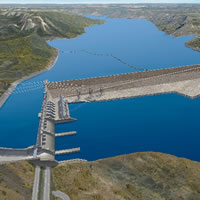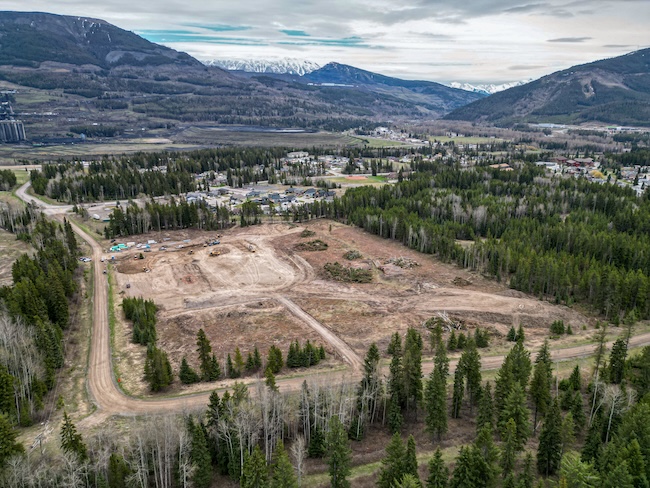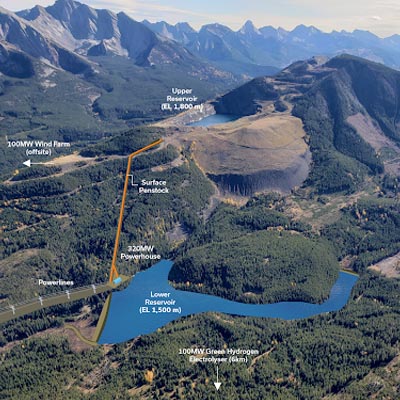BC Hydro calls environmental approval of Site C “significant milestone”

An artist rendering of Site C dam, west facing. — Graphic courtesy BC Hydro BC Hydro responded yesterday to federal and provincial decisions to grant
An artist rendering of Site C dam, west facing. — Graphic courtesy BC Hydro
BC Hydro responded yesterday to federal and provincial decisions to grant environmental approval to the Site C Clean Energy Project (Site C).
"This is a significant milestone for the Site C project. After a rigorous environmental assessment process, the project has received environmental approval," said Susan Yurkovich, BC Hydro’s Executive Vice-President responsible for the Site C project.
The Site C project still requires a final investment decision by the Province and regulatory permits and authorizations before it can proceed to construction. Subject to approvals, Site C would be a source of clean, renewable and cost-effective electricity in B.C. for more than 100 years.
Since 2007, BC Hydro has undertaken extensive consultation and engagement with the public, Aboriginal groups and local governments, including more than 500 meetings, presentations, community events and open houses.
The environmental assessment process began in 2011 and included multiple years of studies to identify and assess potential project effects and develop comprehensive mitigation measures. BC Hydro filed more than 29,000 pages of evidence and responded to more than 7,000 information requests from the public, Aboriginal groups, government agencies, communities and stakeholders.
In addition, the regulatory agencies undertook multiple consultation periods, culminating in a two-month public hearing process held by an independent Joint Review Panel.
Environmental approval of the project comes with conditions from the federal government and the Province that BC Hydro must meet to build and operate the facility.
"BC Hydro will carefully reflect on the conditions and ensure that plans are in place to fully meet all of the conditions set out by the federal and provincial governments," said Yurkovich.
Key facts about Site C:
- Site C would provide 1,100 megawatts of capacity, and produce about 5,100 gigawatt hours of electricity each year — enough energy to power the equivalent of about 450,000 homes per year.
- Site C would have among the lowest greenhouse gas emissions, per gigawatt hour, compared to other electricity-generation options.
- By relying on the existing Williston Reservoir for water storage, Site C would be able to generate approximately 35 per cent of the energy produced at the W.A.C. Bennett Dam, with only five per cent of the reservoir area.
- Site C would contribute $3.2 billion to provincial GDP from the purchase of goods and services during construction, including an increase of $130 million to regional GDP.
- Site C would be among the most cost-effective resource options for BC Hydro ratepayers at a cost per megawatt hour of $83. After an upfront capital cost of $7.9 billion, Site C would be inexpensive to operate and would have a long life of more than a 100 years.
- The project would create approximately 10,000 person-years of direct employment during construction, and about 33,000 person-years of total employment through all stages of development and construction.
- Activities during construction would result in approximately $179 million in provincial revenues, and approximately $270 million in revenues for the federal government.
- During construction, Site C would result in a total of $40 million in tax revenues to local governments and, once in operation, $2 million in annual revenue from grants-in-lieu and school taxes.
- A regional legacy benefits agreement would provide $2.4 million annually to the Peace River Regional District and its member municipalities for 70 years, starting when Site C is operational. The annual funding would be indexed to inflation.
- Offers of accommodation have been made to all of the First Nations that the independent Joint Review Panel determined to be significantly affected by the project. While specific agreements are under negotiation, they could include elements such as lump sum cash payments, payment streams over time, the transfer of provincial Crown lands to First Nations, the implementation of land protection measures or special land management designations, and work and contract opportunities.
- Subject to approvals, site preparation activities would start in January 2015.




